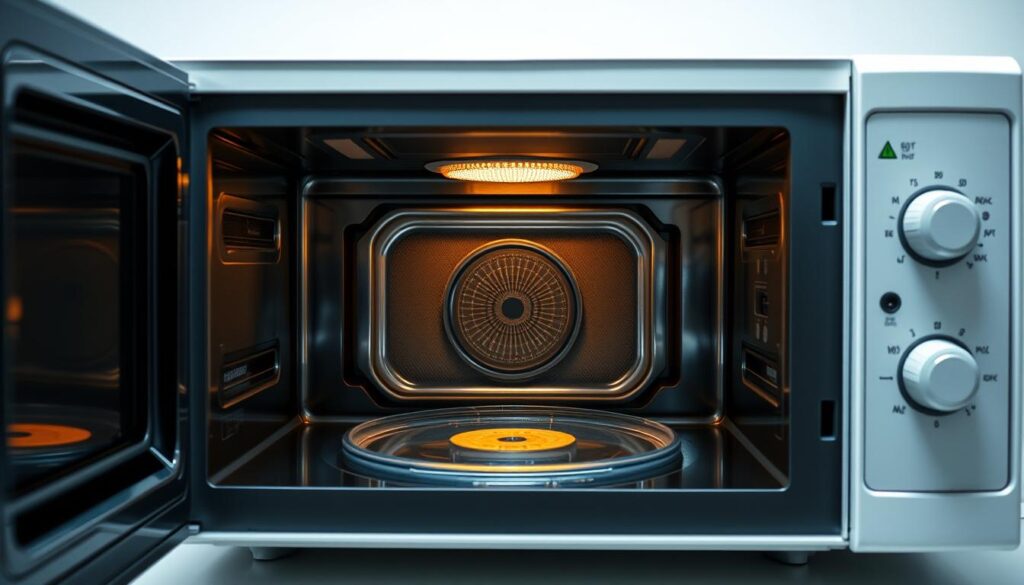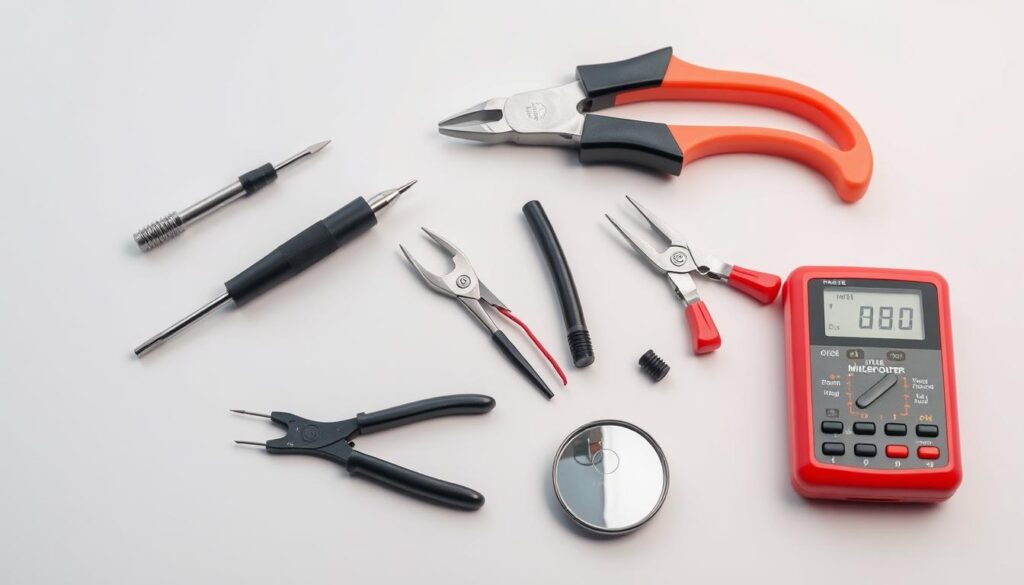
Replacing a microwave light bulb can seem tough, but we're here to help. Our team, experts in micro oven repair, will guide you safely and efficiently. We'll show you how to replace a microwave light bulb step by step. You'll learn about safety and what tools you need.
We aim to give you the skills for a successful micro oven repair. Our guide is for DIY experts and beginners alike. It ensures your safety and keeps your microwave working well. Follow our advice to avoid expensive fixes and keep your microwave in great condition.
It's key to know how your microwave's light works. A good light system is vital for safe and efficient cooking. For complex issues, it's best to call a professional microwave repair company. But, regular maintenance can help avoid problems.
Regular checks can spot and fix issues early. This way, you can avoid bigger problems later.
There are different kinds of microwave light bulbs. You might find halogen, LED, or incandescent bulbs. Each has its own benefits. Halogen bulbs shine bright and last long. LED bulbs save energy and are good for the planet. Incandescent bulbs are old-school but not as efficient.
Knowing your bulb type is important for the right replacement. Check your microwave's manual or the manufacturer's website for this info. Signs of a bad bulb include dimming, flickering, or no light at all.
Spotting these signs early can save you from costly repairs. It keeps your microwave working well.
When fixing small kitchen appliances, like microwaves, safety comes first. We must avoid injuries and electrical shocks. Always unplug the microwave before starting work.
Wear gloves and safety glasses to protect yourself. Follow the manufacturer's instructions for a safe repair. These steps help prevent accidents and make the job easier.
Some key safety measures to consider include:
By focusing on safety, we can do a great job fixing microwaves and other appliances. Always remember, safety is our number one priority when working with electrical devices.

Fixing a micro oven needs the right tools and materials. As a small appliance service provider, we know how important it is to be ready. We'll list the essential tools and materials for the job, including what a top microwave repair company suggests.
You'll need basic tools like a screwdriver, pliers, and a new bulb. It's smart to wear gloves and safety glasses to avoid electrical shocks and injuries. Make sure the new bulb fits your microwave model and meets the manufacturer's standards.
Choose a replacement bulb that fits your microwave model and follows the manufacturer's guidelines. This ensures a safe and correct installation. A microwave repair company can help find the best bulb for your model.

Tools like a bulb removal tool can be helpful for tougher jobs. As a micro oven repair expert, having the right tools and materials is key. It helps us do a great job and offer top-notch small appliance service to our clients.
Replacing a microwave light bulb is a simple task if you follow the right steps. As a microwave oven technician would, start by unplugging the microwave. Then, gather your tools and materials for small kitchen appliance repair. You'll need a new bulb, a screwdriver, and any other tools you might need.
Before you begin, do a thorough microwave oven diagnosis to find out what bulb you need and where it is. Once you know where the bulb is, remove any screws or covers that hold it in place. Then, carefully pull out the old bulb, noting any wires or connectors you need to disconnect.
To replace the bulb, follow these steps:
After you've replaced the bulb, plug in the microwave and test it. Make sure the new bulb works right. If you're not sure or run into problems, it's best to call a professional microwave oven technician for help with small kitchen appliance repair and microwave oven diagnosis.
Replacing a microwave light bulb can sometimes be tricky. As a microwave repair company, we know how frustrating these issues can be. We're here to help with some microwave troubleshooting tips. These will help you fix common problems and get your microwave working again.
Problems like stuck bulbs, connection issues, and faulty installations are common. Understanding small appliance service and repair is key. Here are some tips to help you fix these issues:
These simple tips can help you quickly fix any replacement issues. If DIY repairs don't work or you're not comfortable, call a professional microwave repair company. Always prioritize your safety when working with electrical appliances. If unsure, don't hesitate to seek help.
Replacing a microwave light bulb is often a DIY job. But, there are times when you should call a microwave oven technician. If you're not sure how to do it or face complex problems, it's best to get professional help. They can guide you safely and efficiently.
If you're not comfortable with the task or lack the right tools and materials, it's safer to get help. A microwave oven technician can do a detailed microwave oven diagnosis. They can find and fix any hidden problems.
Here are some situations where you might need a pro:
In these cases, a professional microwave oven technician is your best bet. They offer expert small kitchen appliance repair services. They'll fix your microwave safely and efficiently, so you can use it without worries.
Keeping your microwave in good shape is key to its long-term use. Replacing a broken light bulb is simple, thanks to our guide. Regular checks and repairs can also make your microwave last longer and avoid bigger problems later.
We're a trusted service for small appliances, and we know how crucial it is to keep them working well. By focusing on microwave care, you'll enjoy its benefits for many years. With a little effort, you can handle small problems like a dead light bulb and keep your microwave running smoothly.
As certified technicians, we repair all major appliance brands. Whether it’s Samsung, LG, Whirlpool, GE, or Bosch, we can fix your appliance.